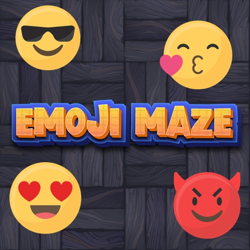Description:
Bow games are growing in popularity, with their core objective requiring players to demolish as many obstacles as possible. This feature of dismantling blocks not only offers a fun experience but also allows you to earn points that indicate a job well done, meriting a "perfect score." This achievement solidifies a sense of accomplishment for players who strive to achieve the maximum result in the game.Bow games are much more than just typical pastimes that find their origin in archery. Infused with puzzles that need meticulous analysis and problem-solving skills, these games are an intellectual workout of a different kind. These are not only designed to engage and entertain, but also to stimulate and exercise your cognitive faculties.
Such games demand and refine your attention to detail, your cognitive thought processes, and your overall mental prowess. As you navigate through challenging levels, aiming your arrows and destroying blocks becomes more than just a test of your archery prowess; it becomes a test of cognitive endurance and strategic planning.
The variety in the gameplay of bow games builds dynamically from one level to the next, making them engaging, addictive, and attention-holding. Every level you conquer sets you up for the next, more difficult hurdle, encouraging constant progression and improvement. The motivation lies largely in outdoing oneself, pushing one's abilities further and further, to overcome their best score yet. The challenge lies not merely in progressing through levels but to master them in such a way that you reach the optimum result on every level.
Playing bow games is an entertaining and thrilling way to challenge and better yourself. It goes beyond the traditional perspective of gaming, combining strategy, skill, and acute attention in its mix. Not only do you develop as a player, deftly maneuvering through the game's intricate levels and puzzles, but you also develop cognitively and strategically, mastering intricate details, solving puzzles, and ultimately optimizing your performance.
Bow games offer an enjoyably challenging way to hone your mental agility, all while simply playing a game. Come, immerse yourself in the world of bow games, experience the thrill of each level, aim for your highest score, and watch as you develop and refine your strategic thinking and problem-solving abilities. Enjoy the exciting yet complex journey of bow games.
Instructions:
Destroy diamond blocks, earn points, pass level after level until you pass the game completely. The more blocks destroyed in one turn, the more points the player gets.What are Browser Games
A browser game or a "flash game" is a video game that is played via the internet using a web browser. They are mostly free-to-play and can be single-player or multiplayer.
Some browser games are also available as mobile apps, PC games, or on consoles. For users, the advantage of the browser version is not having to install the game; the browser automatically downloads the necessary content from the game's website. However, the browser version may have fewer features or inferior graphics compared to the others, which are usually native apps.
The front end of a browser game is what runs in the user's browser. It is implemented with the standard web technologies of HTML, CSS, JavaScript, and WebAssembly. In addition, WebGL enables more sophisticated graphics. On the back end, numerous server technologies can be used.
In the past, many games were created with Adobe Flash, but they can no longer be played in the major browsers, such as Google Chrome, Safari, and Firefox due to Adobe Flash being shut down on December 31, 2020. Thousands of these games have been preserved by the Flashpoint project.
When the Internet first became widely available and initial web browsers with basic HTML support were released, the earliest browser games were similar to text-based Multi-User Dungeons (MUDs), minimizing interactions to what implemented through simple browser controls but supporting online interactions with other players through a basic client–server model.[6] One of the first known examples of a browser game was Earth 2025, first released in 1995. It featured only text but allowed players to interact and form alliances with other players of the game.



